Okta SAML Configuration
The document provides a comprehensive guide for setting up Single Sign-On (SSO) login functionality within an organization's infrastructure. It outlines a series of steps to integrate SSO using Okta as the identity provider, facilitating seamless access to various applications and resources.
Beginning with navigating to the organization's Integrations screen and initiating the connection process, users are guided through the configuration steps, which include creating and setting up a SAML SSO Provider. The document also covers the necessary configurations within Okta, such as creating an app integration and configuring SAML 2.0 settings.
Additionally, it offers guidance on advanced settings, including the importation of SAML configurations from Okta. Through clear instructions and actionable steps, the document aims to empower users in implementing a robust SSO solution.
Appcircle supports Okta as OpenID or SAML provider.
Only Enterprise accounts support SSO.
Please be aware that, enabling SSO for APPCIRCLE LOGIN doesn't enable SSO for Testing Distribution and Enterprise App Store. They must be configured separately.
SSO Login
- To start, go to My Organization > Integrations screen and press the Connect button next to SSO Login under the Authentications section.
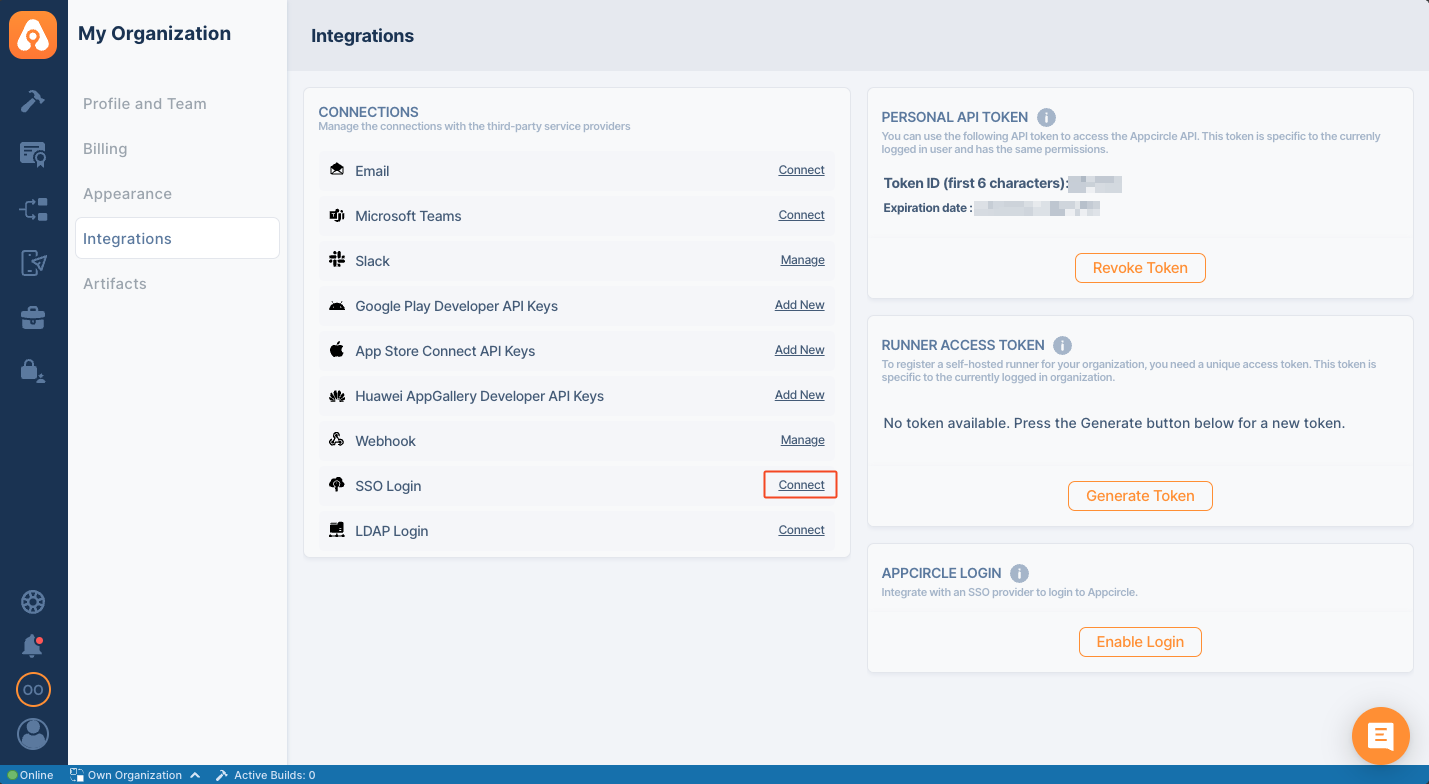
- Click Create button to create your SSO Login
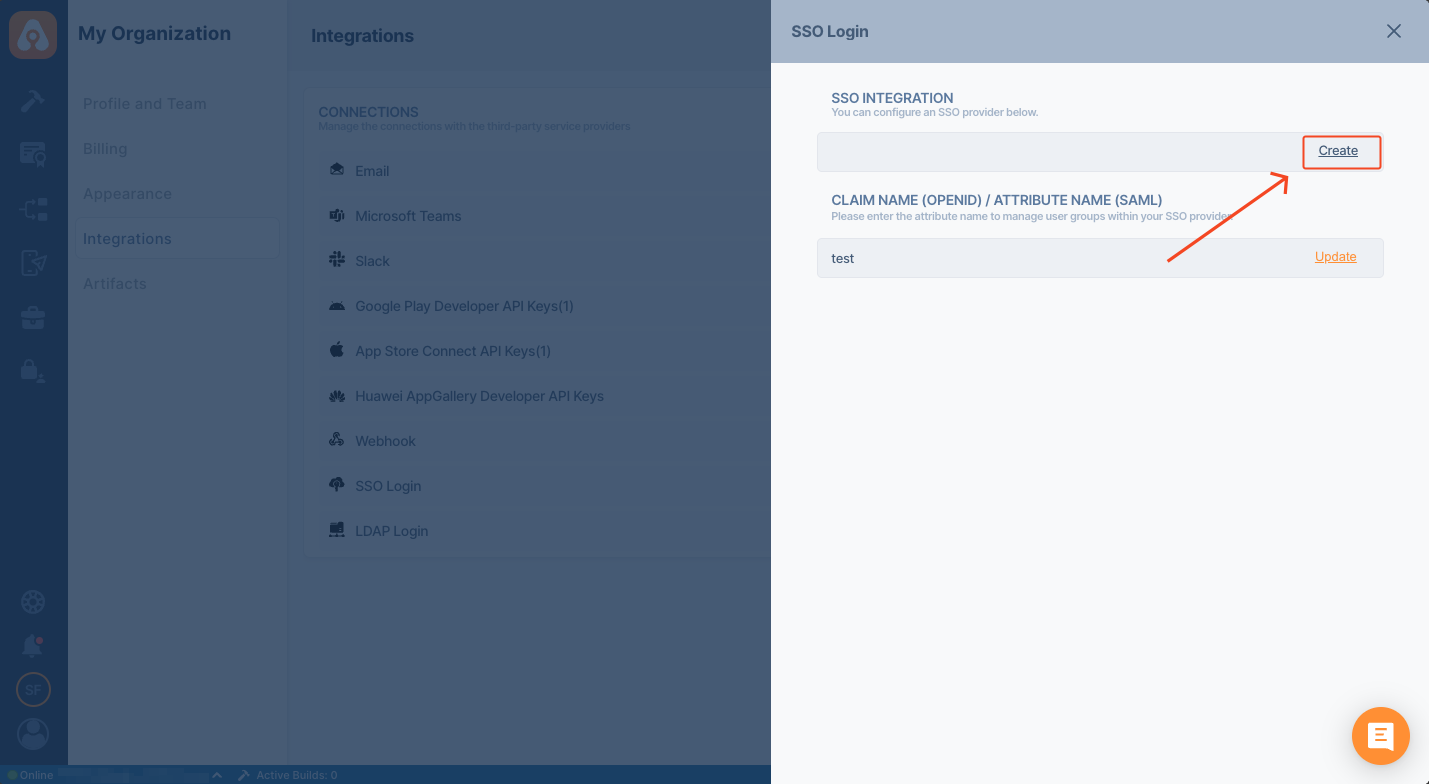
If you want to manage user groups within your SSO provider, you should set CLAIM NAME (OPENID) / ATTRIBUTE NAME (SAML) field.
- Select Setup SAML SSO Provider
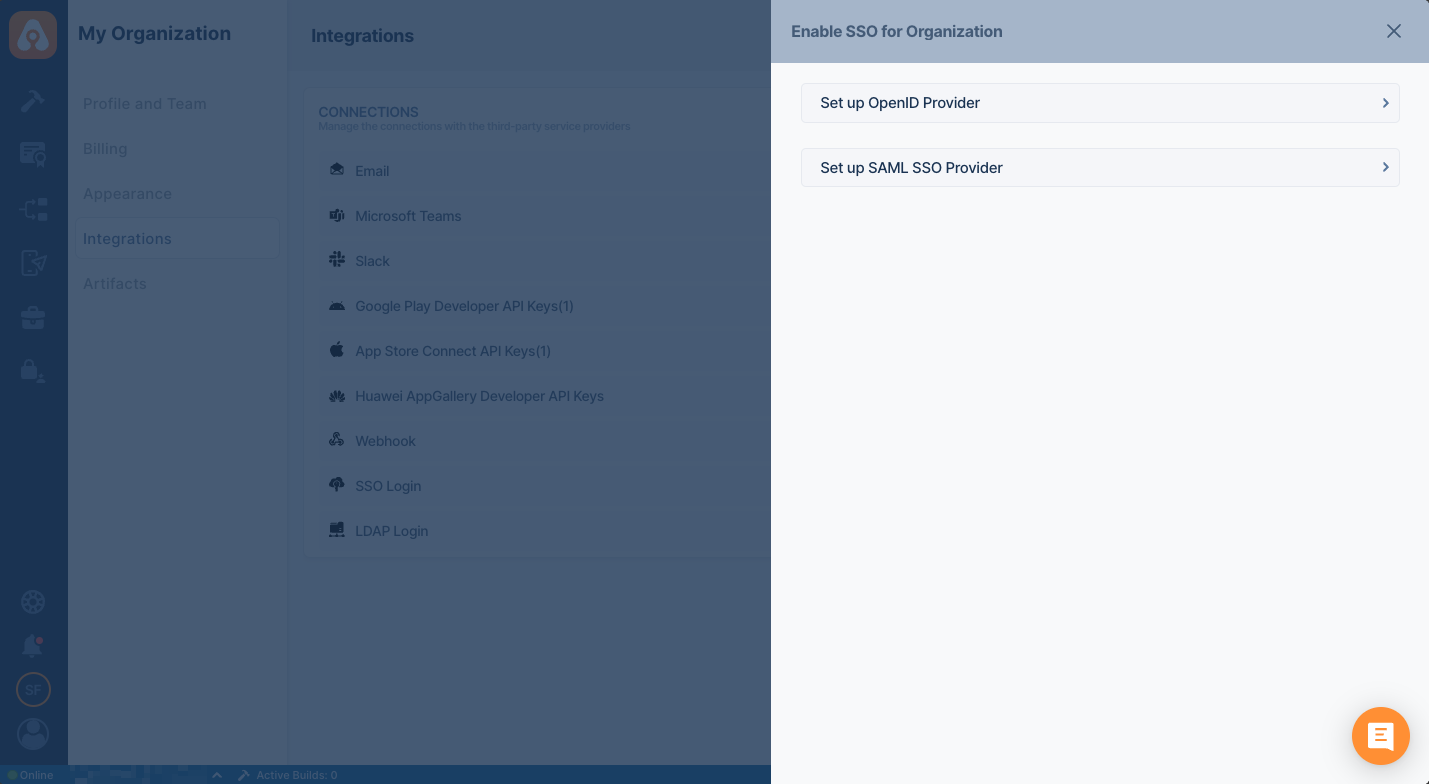
-
Pick an alias and display name for your organization. Please pick a short and rememberable alias.
-
This screen will auto-generate an URL for the Enterprise App Store and Testing Distribution.

Okta App Integration
- Login to your Okta account and navigate to Applications and then click Create App Integration.
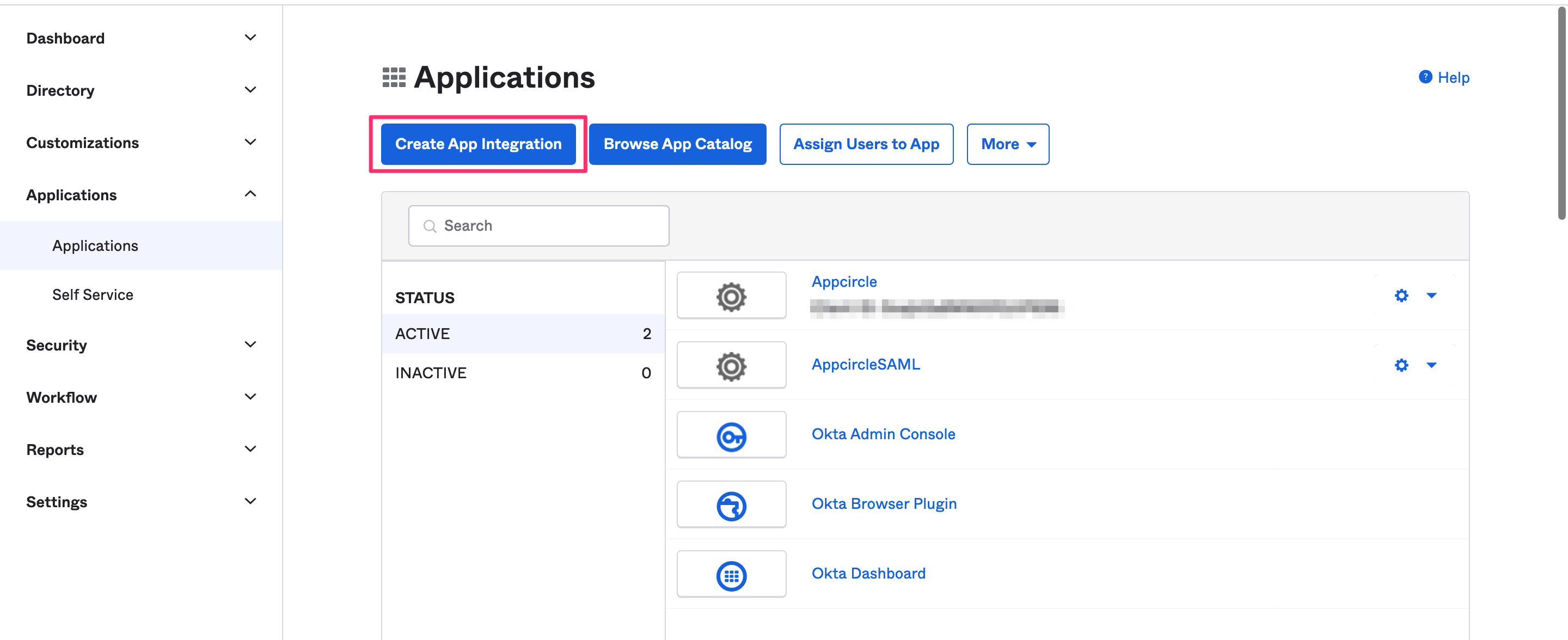
- Select SAML 2.0 as Sign In Method and hit
Next.
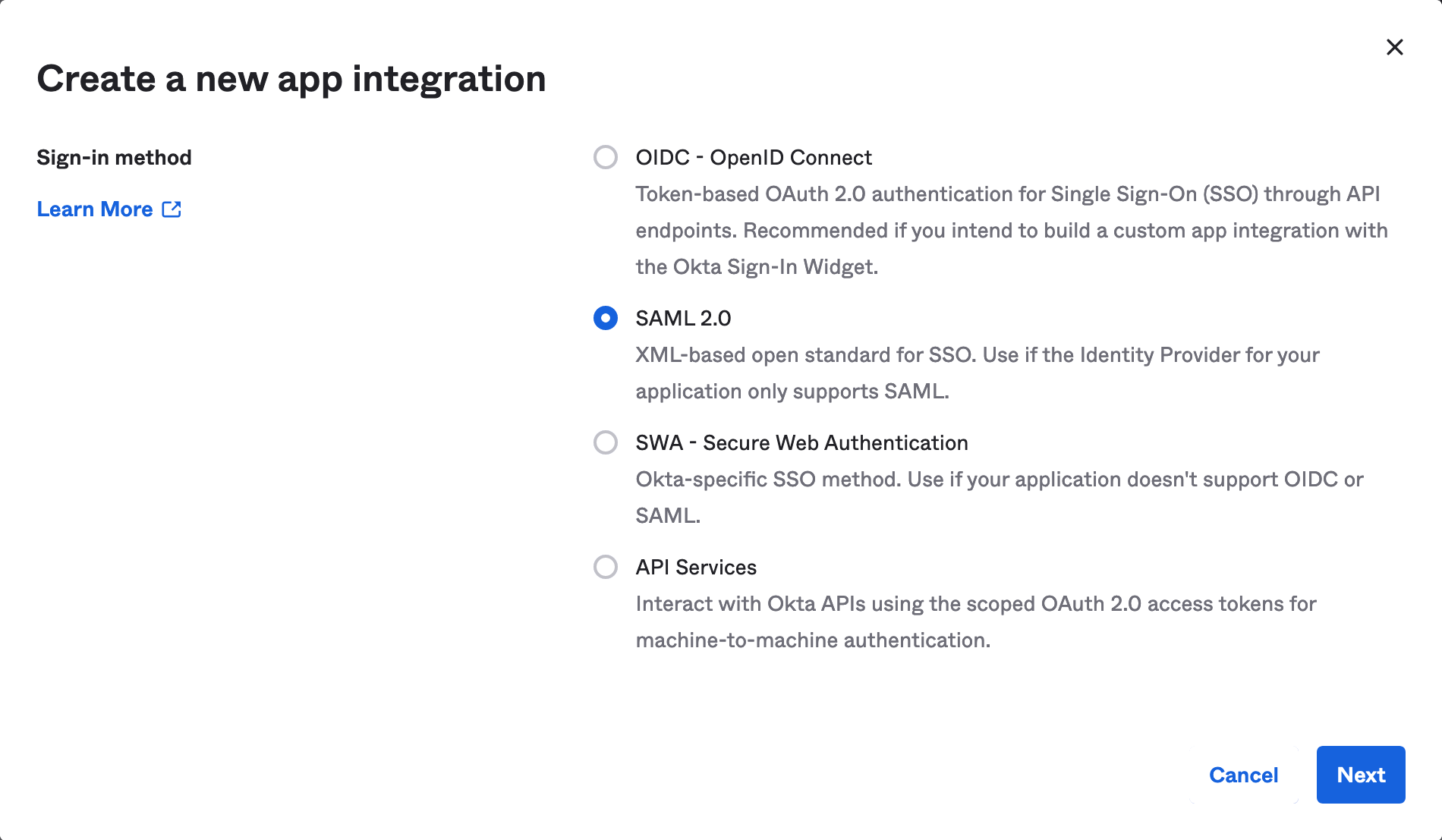
- Pick a name and optional logo for the app and hit
Next.
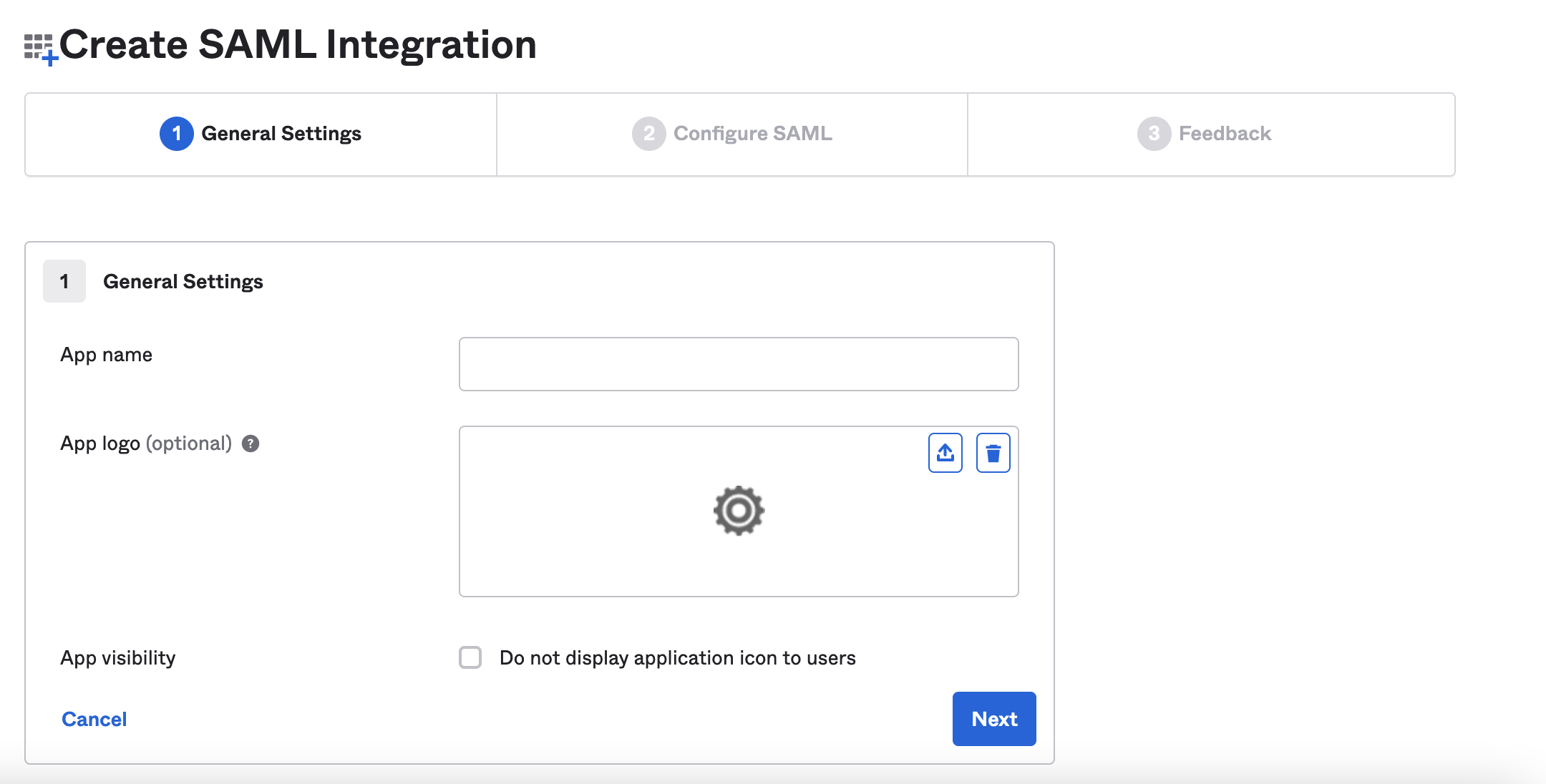
- Copy the
Store Redirect URLfrom the Appcircle and paste it to the Single sign-on URL section on the OKTA. - Write
https://auth.appcircle.io/auth/realms/storefor the Audience URI(SP Entity ID)
If you are a self-hosted Appcircle user, then you should change the domain of the Audience URI to your own domain.
You must use the same auth domain address with the store redirect URL.
For example your store redirect URL is https://auth.self.spacetech.com/auth/realms/store/broker/identity-spacetech/endpoint. Then your Audience URI must be https://auth.self.spacetech.com/auth/realms/store
Please ensure that there is no / at the end of the Audience URI which will cause errors.
- Select
EmailAddressfor the Name ID format.
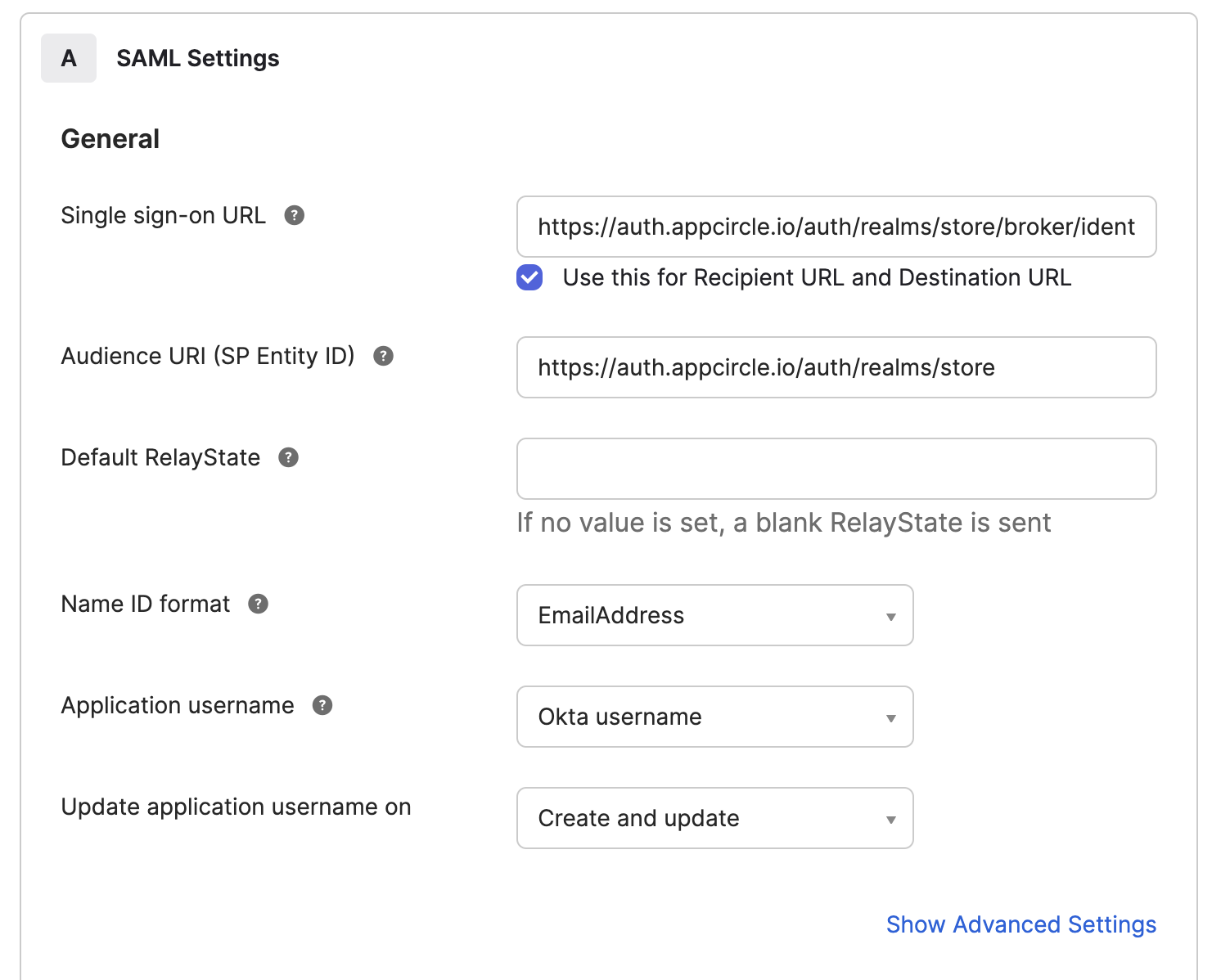
- Click "Show Advance Settings" button
- Copy the
Distribute Redirect URLfrom the Appcircle and paste it to the Other Requestable SSO URLs section and set index to1on the OKTA.
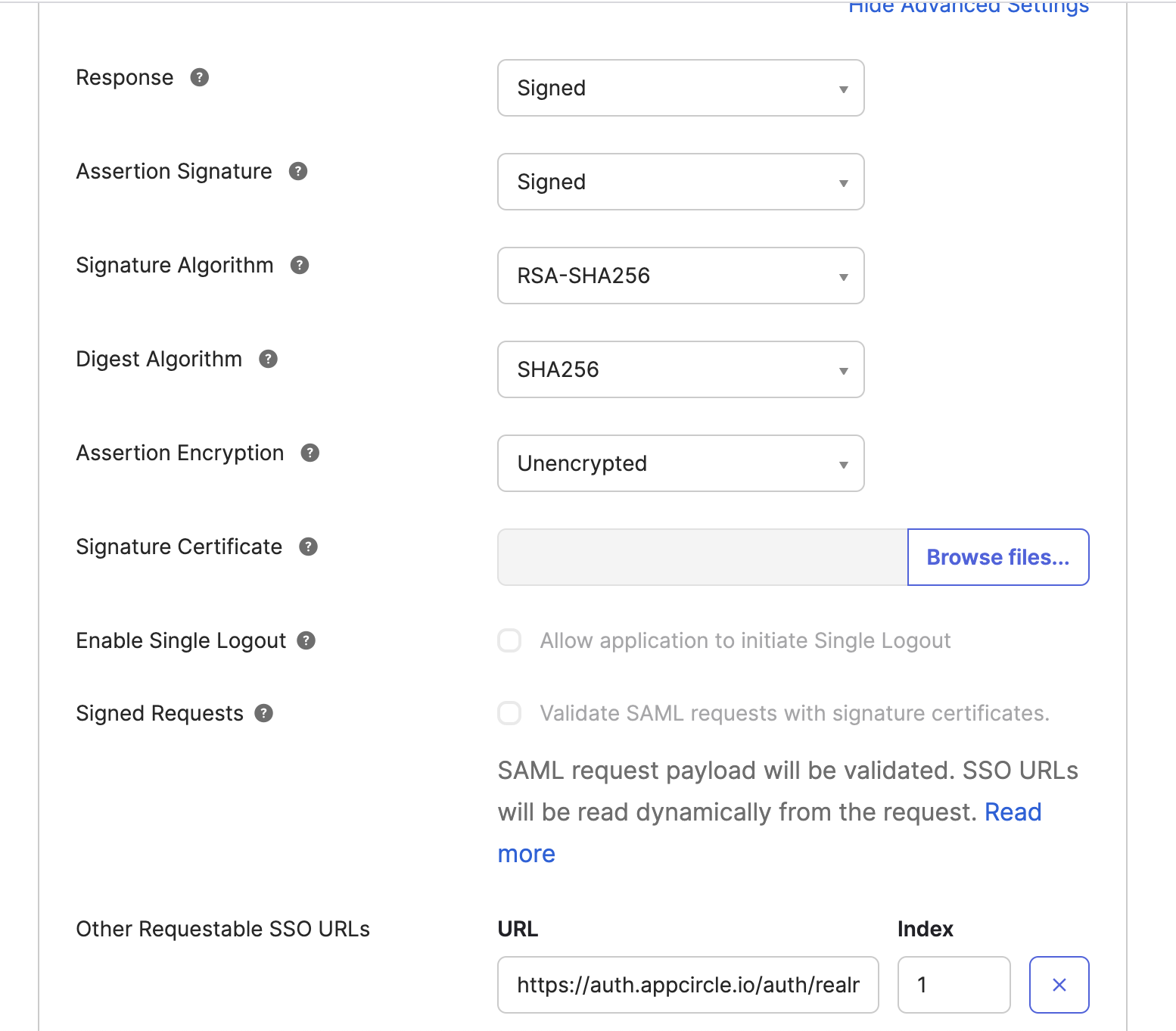
-
You can hit
NextandFinishthe OKTA configuration as your needs. -
Instead of writing all the settings of SAML, you can download the settings file from Okta and upload it. Click the "Copy" button of Metadata URL and open it another tab then save the XML file.
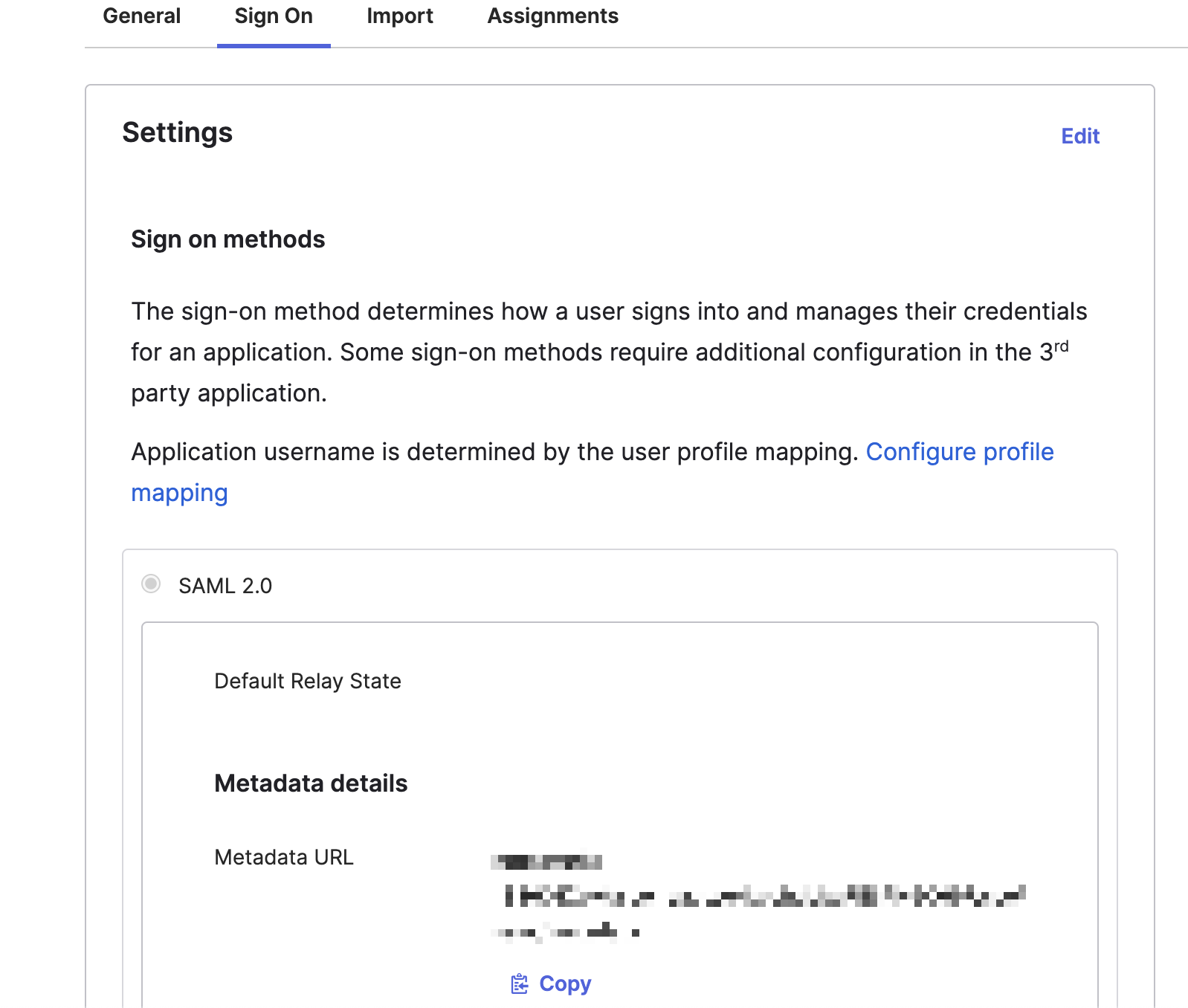
Okta Managing User Groups
Managing user groups within Okta provides users and organizations with several benefits. By organizing users into groups, administrators can efficiently manage access permissions for various applications and resources, saving time and effort. Administrators can synchronize Okta user groups with Appcircle, allowing for granular access control and group-based permissions. This integration enhances security, simplifies access management, and promotes collaboration within organizations utilizing the Appcircle platform.
- Login to your Okta account and navigate to Directory and then click Groups.
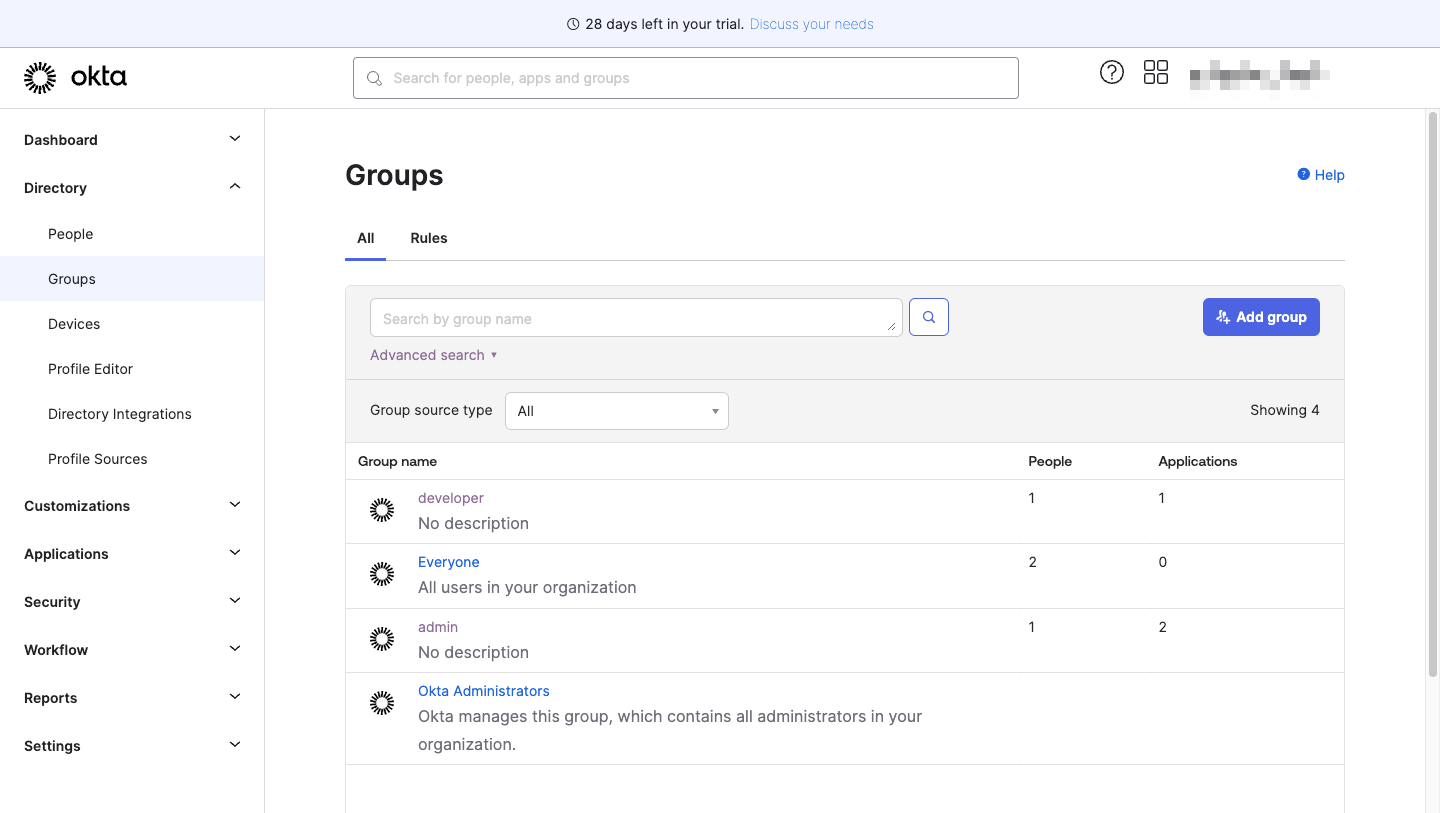
- Click "Add group" button and after fill the fields click "Save" button.
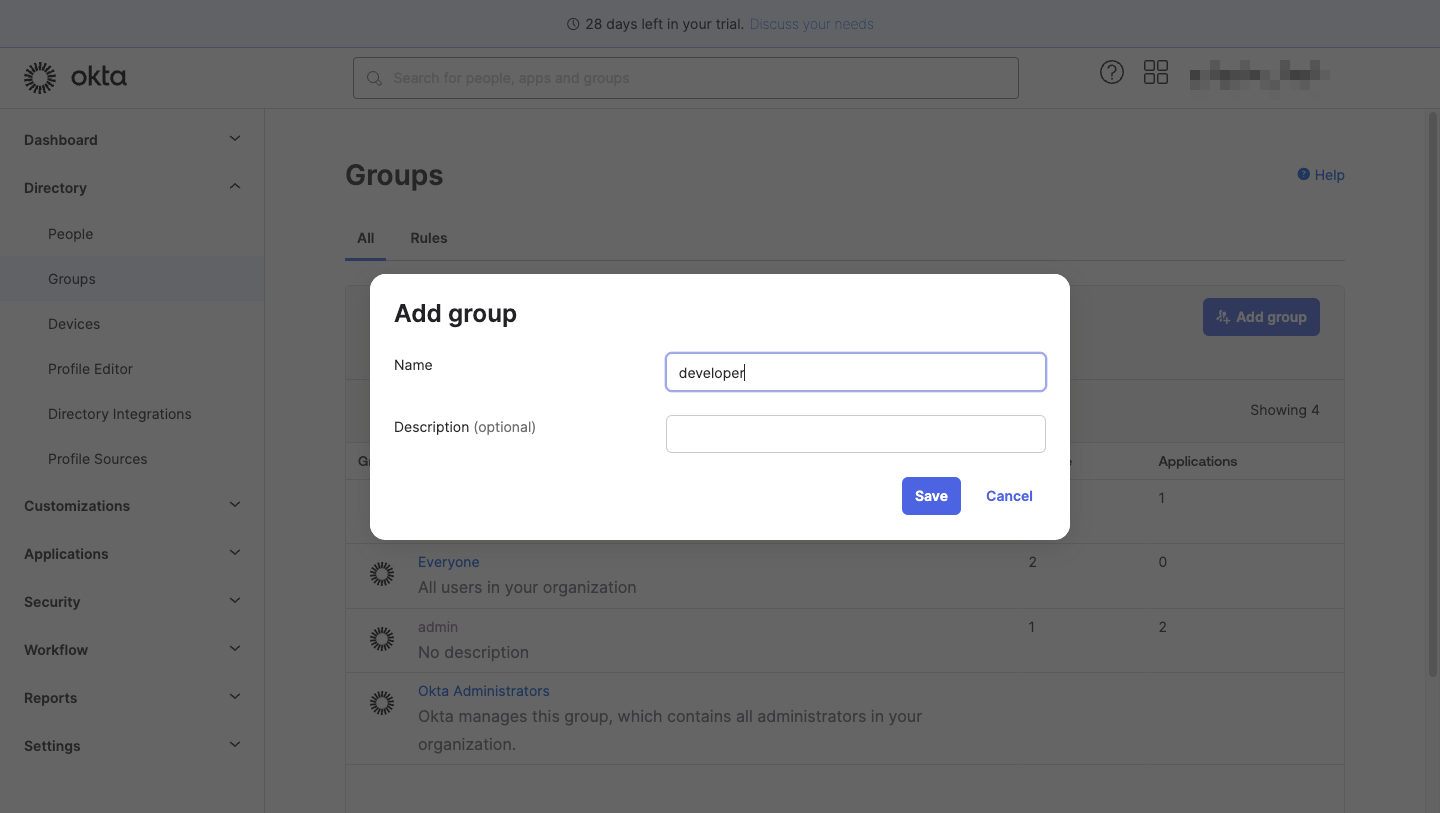
- Click recently created group name and assign people to your group.
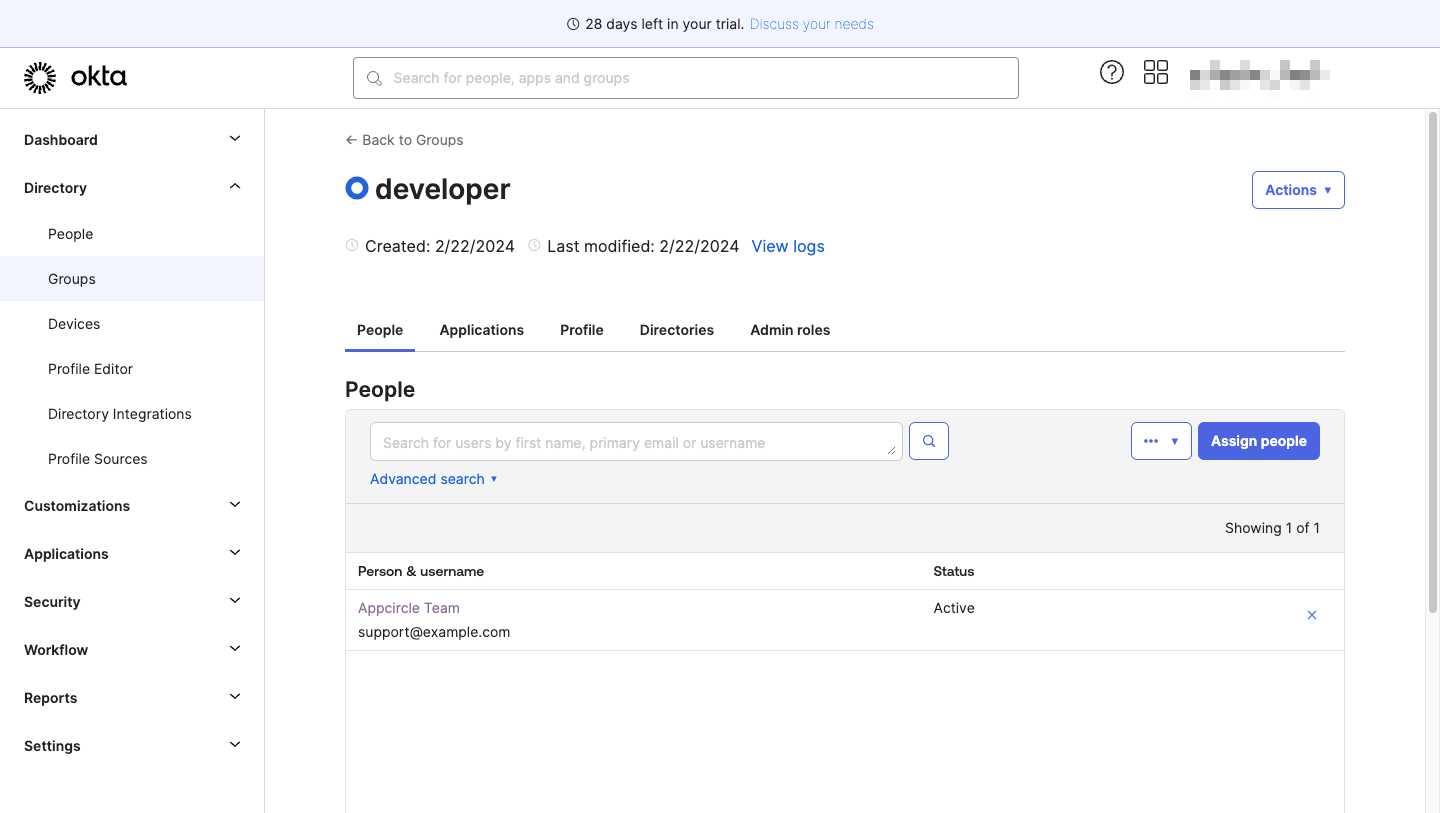
- Navigate to Applications tab and assign the recently created user group(s) with "Assign applications" button.
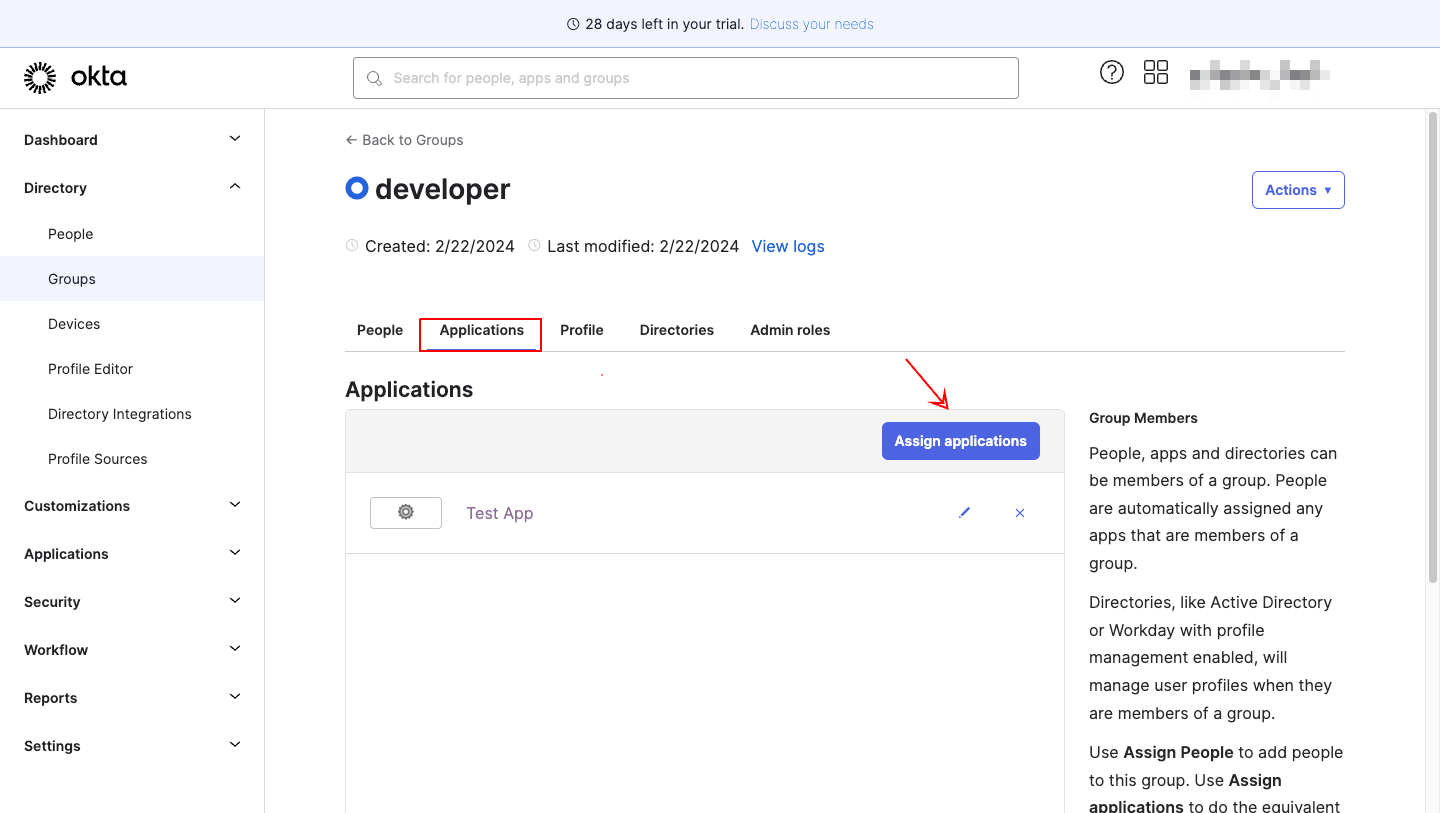
- Navigate to Applications and click on integrated app.
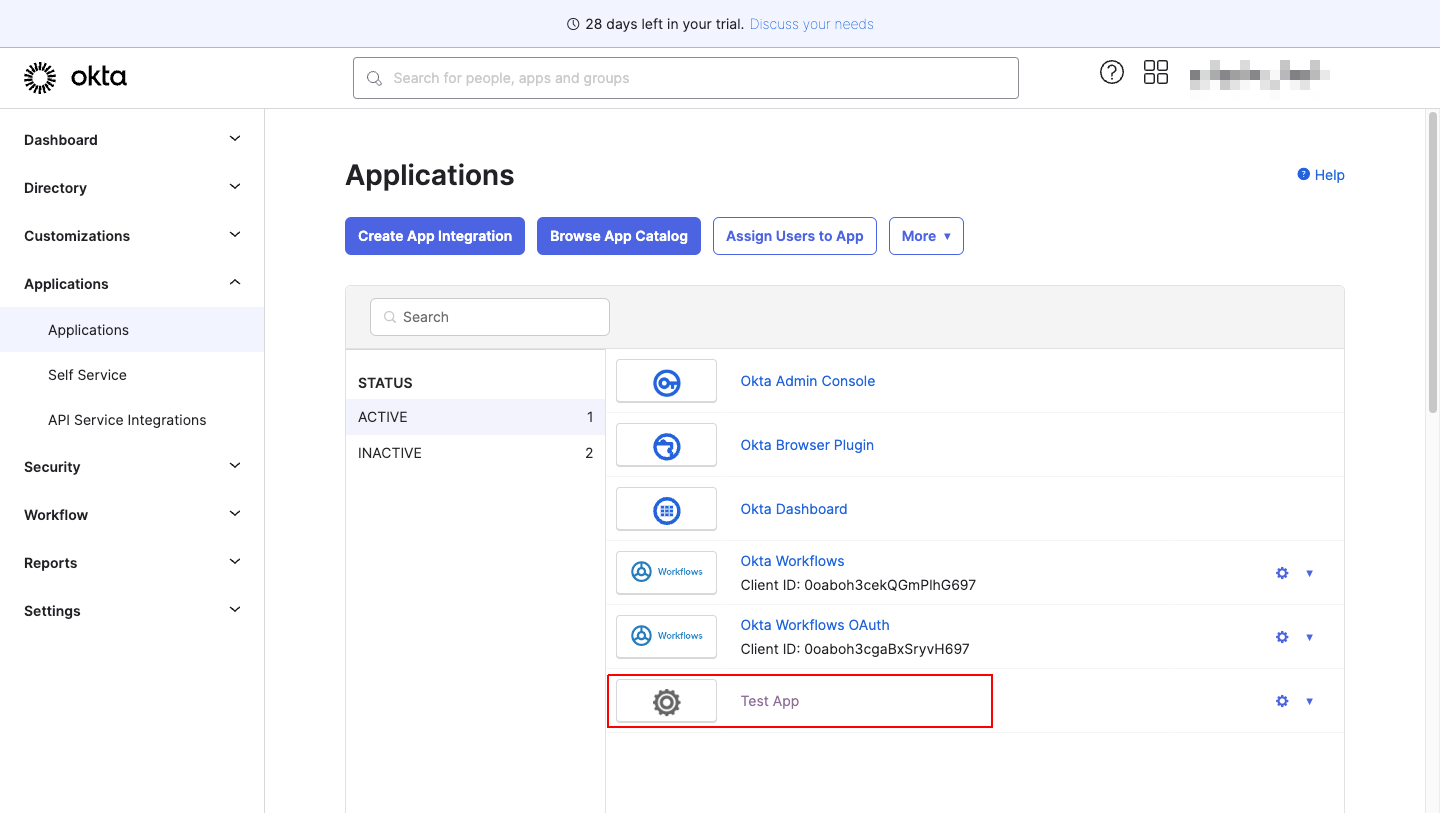
- Navigate "General" tab and edit SAML Settings.

- In Configure SAML step, you should set Group Attribute Statements.
- Name field should be matched with the CLAIM NAME (OPENID) / ATTRIBUTE NAME (SAML) field set in Appcircle SSO integration page. Name format should be
Basic. - If you want to get all the groups that you created you should set filter section as
Matches regexand.*.
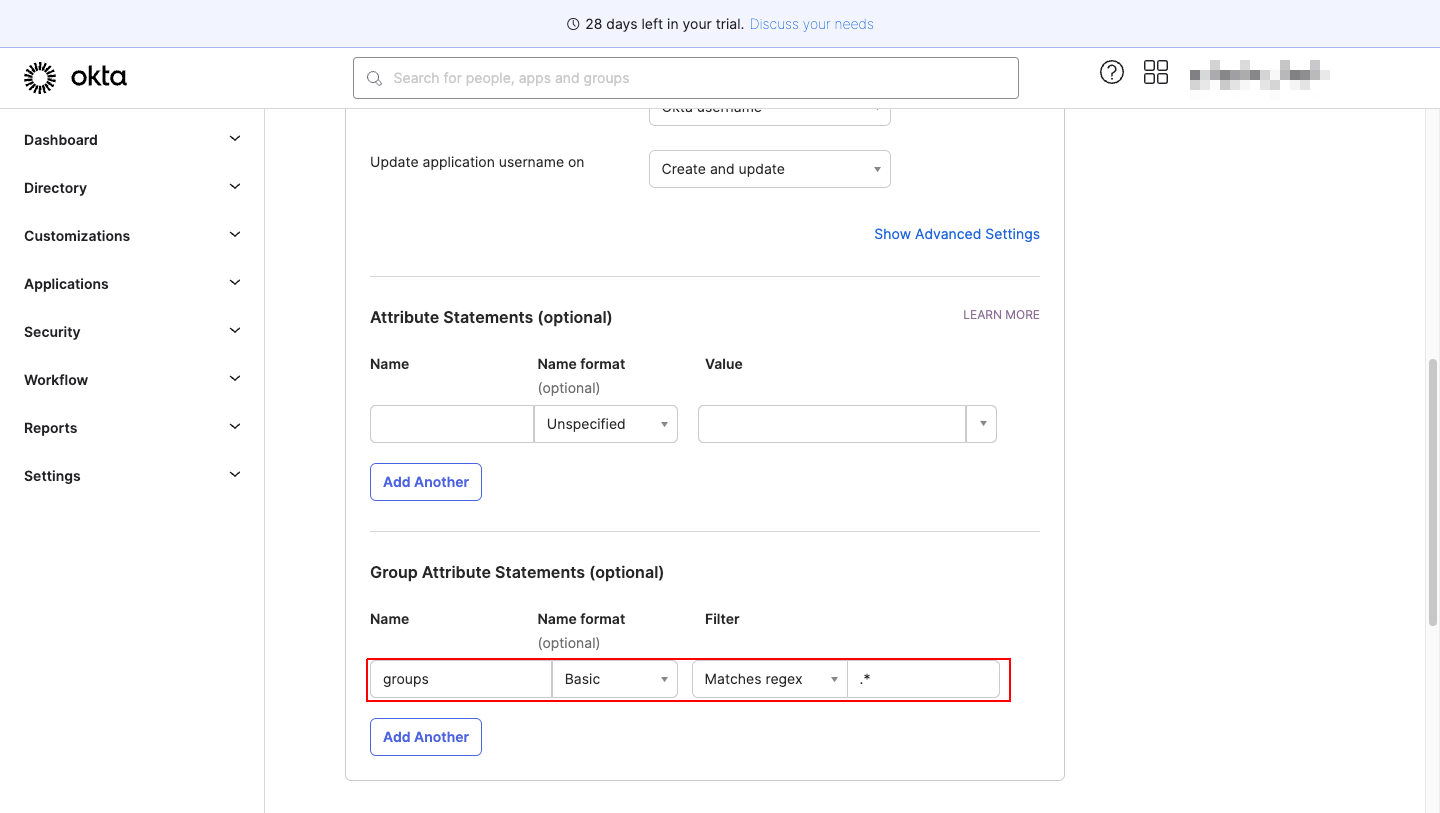
- Click on the "Next" button and finish the edit process.
Sample Scenario
For example there are two groups, one is developers and other one is users.
The beta channel on Enterprise App Store should be available for developers group and not for users group that has end-users.
The live channel should be available for both groups in this case.
Appcircle Integration Configuration
- Go back to Appcircle, upload this XML file by clicking the button under Import SAML Configuration

-
Check all the settings on this page and confirm that Redirect and SSO URLs are imported correctly. You can check if the X509 Certificate is imported correctly as well. If you want to enter multiple certificates you can separate them by using a comma between them. Please be aware that you need to remove any new lines or file headers from this edit box. This edit box only accepts a long base64 encoded string.
-
Hit
Savebutton and save the SAML configuration on Appcircle. -
To enable SSO Login for the Enterprise App Store, you should navigate to the Enterprise App Store -> Settings and then click on the
Activatebutton next to SSO Login
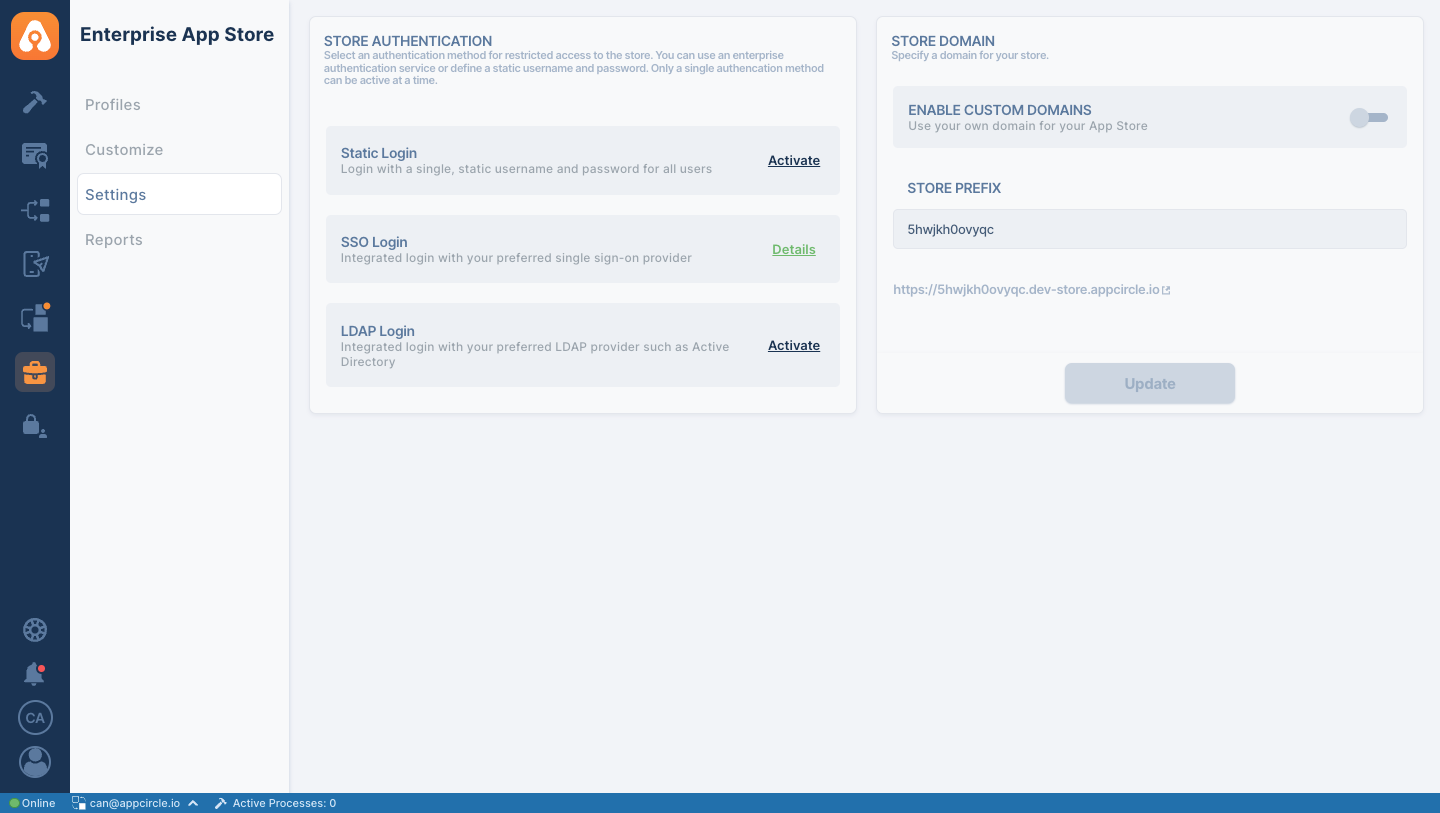
- To enable SSO login for the Testing Distribution, go to the Testing Distribution module and select related profile
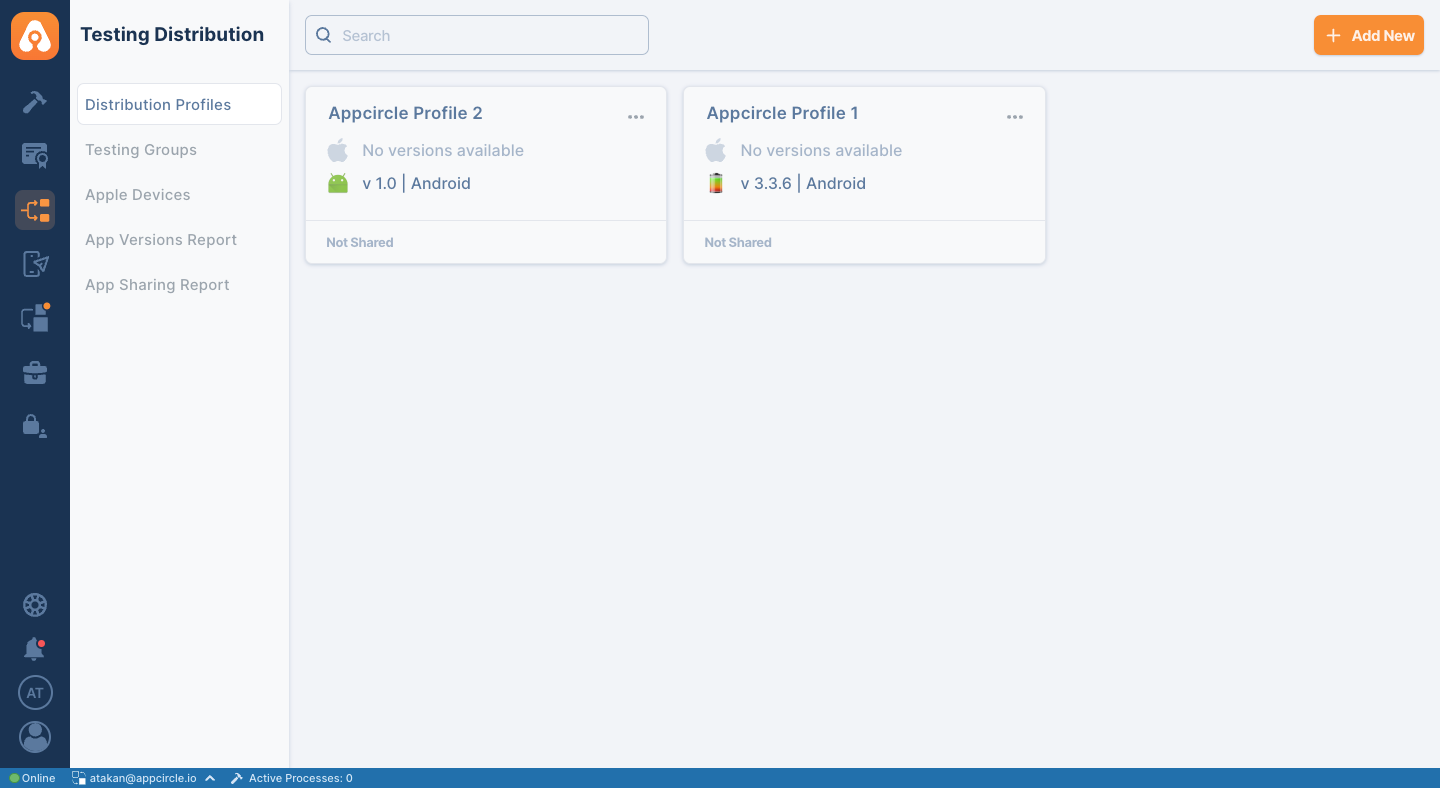
- Click on the
Settingsbutton on the detail screen
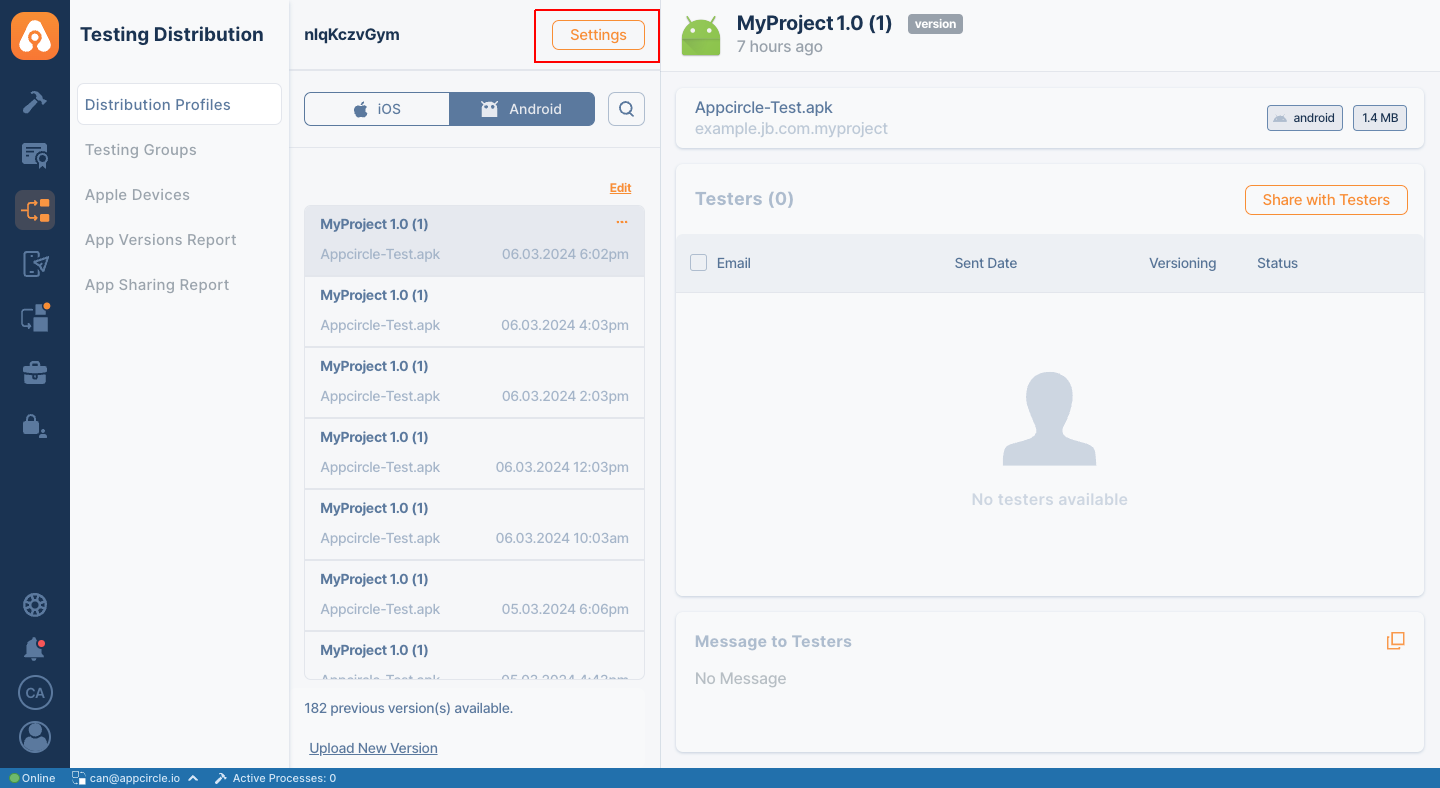
- Navigate to the
Authenticationtab and select SSO Login as the authentication type
